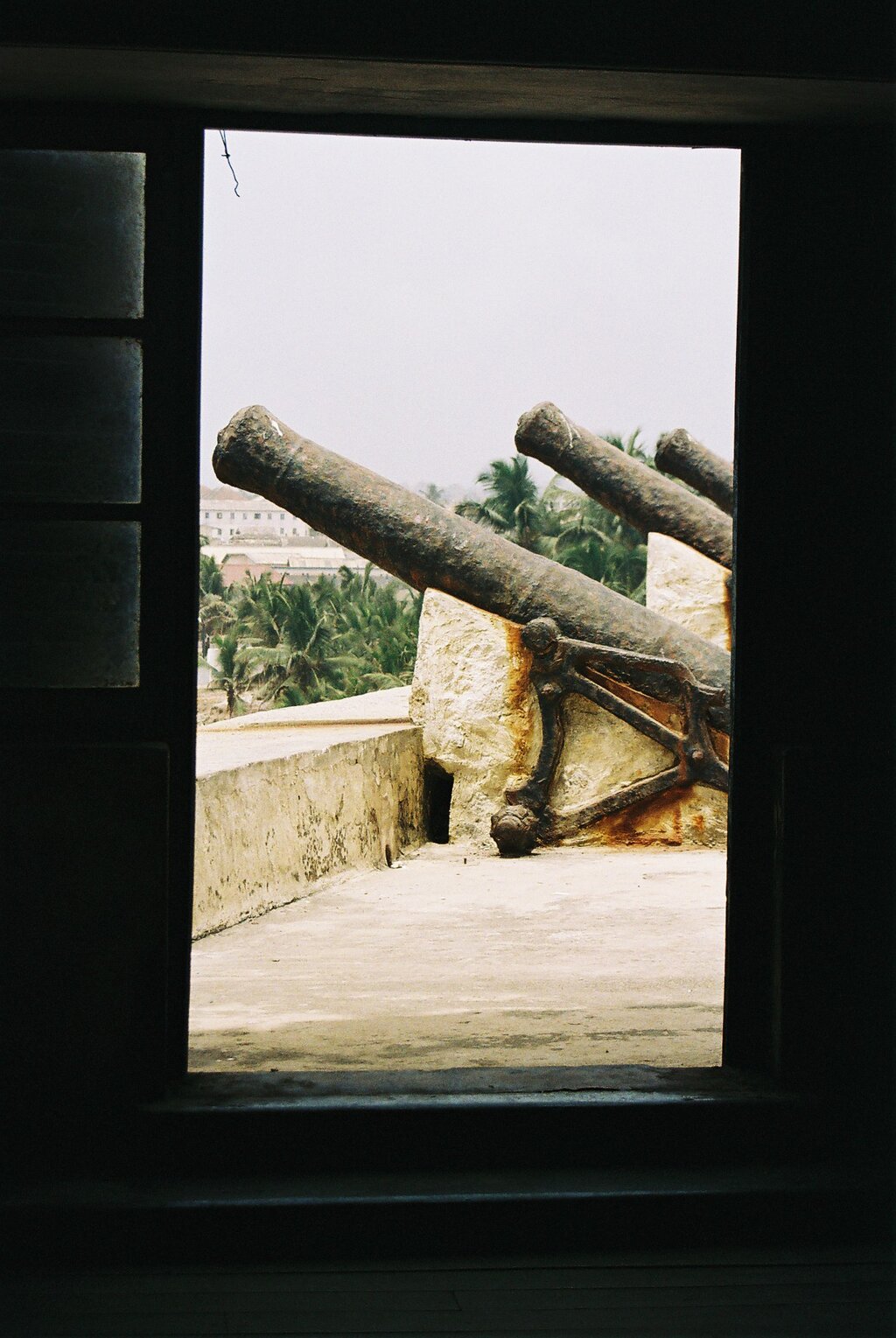
Military Role and Strategic Significance
Like many other European forts on the Gold Coast, Fort Crèvecœur was not just a commercial hub—it was a military installation designed to assert and maintain foreign dominance. Armed with cannons and manned by a small garrison, the fort provided a defensive position against rival European powers, particularly the British and Portuguese. The fort often played a role in local conflicts, allying with or against African coastal states based on trade interests.
Throughout the 17th and 18th centuries, Fort Crèvecœur functioned as both a military outpost and a prison, detaining local captives and sometimes rival European nationals. Its strategic location made it essential in controlling the narrow strip of land connecting inland trade routes with the Atlantic, which was critical for sustaining colonial economic ambitions.
Transfer to British Rule and Renaming
In 1868, a major reshuffling of colonial territories took place through the Anglo-Dutch Gold Coast Treaty, which aimed to reduce friction between the Dutch and British by consolidating their respective holdings. Under this agreement, the Dutch ceded Fort Crèvecœur to the British, who renamed it Fort Ussher, likely in honor of Herbert Taylor Ussher, a colonial administrator in the British Gold Coast government.
Under British rule, the fort’s primary purpose shifted from trade to governance and incarceration. It became an administrative post and was repurposed as a colonial prison, used to detain both criminal offenders and political dissidents. The British integrated the fort into their broader network of colonial infrastructure, using it to project authority over Accra and its surrounding areas.
Colonial Governance and Administrative Function
During British colonial rule, Fort Ussher became part of the governance machinery that ruled the Gold Coast from the late 19th century until independence in 1957. The fort served as a local administrative center where colonial officers managed trade regulations, tax collection, and local disputes, often bypassing traditional Ga leadership structures.
The British imposed a system of indirect rule in the Gold Coast, working through traditional chiefs while centralizing power in colonial forts and offices. Ussher Town, like neighboring James Town and Osu, was governed by a mixture of colonial administrators and loyalist African elites, often drawn from educated families who had adopted European customs and religion.
The fort’s use as a prison continued into the 20th century, and it became infamous for its harsh conditions. It was even used to imprison key nationalists and labor activists, including members of Kwame Nkrumah’s Convention People's Party, prior to independence.
Development of Ussher Town
The area surrounding the fort—initially known as Dutch Accra—came to be known as Ussher Town after the British took control. Ussher Town is one of the original quarters of Accra, alongside James Town and Osu. It developed into a densely populated urban district, largely inhabited by the Ga people, the indigenous ethnic group of Accra.
Over time, Ussher Town became a melting pot of Ga traditions and European influences. Family compounds, chieftaincy institutions, and religious communities flourished side by side with colonial architecture and British administrative presence. The town also played a central role in the cultural life of Accra, being one of the strongholds of Ga Mashie, the traditional heart of the Ga community.
Fishing became and remains a dominant economic activity in the area, alongside petty trading, artisanal crafts, and cultural practices such as traditional drumming, choral singing, and storytelling.
Resistance and Nationalism
By the early 20th century, Ussher Town and the broader Ga Mashie area became hotbeds of political activism, as local discontent with colonial policies grew. Residents of Ussher Town participated in labor strikes, anti-tax protests, and nationalist rallies. The fort itself, as a site of imprisonment for political agitators, became a symbol of both oppression and resistance.
The neighborhood also contributed leaders and intellectuals to Ghana’s independence struggle. These political developments mirrored broader African nationalist movements that sought to end European domination across the continent.
Post-Independence Period and Preservation
Following Ghana’s independence in 1957, Fort Ussher continued to function briefly as a state-run detention center. However, over time, its administrative and penal roles diminished. It fell into disrepair, and despite its historical importance, has received limited attention compared to more prominent forts like Cape Coast Castle or Elmina Castle.
Today, Fort Ussher is a protected heritage site under the Ghana Museums and Monuments Board. It is also listed under UNESCO’s World Heritage designation for forts and castles in Ghana. While restoration and tourism efforts have been proposed, resource constraints and urban pressure have slowed progress.
Contemporary Ussher Town
Modern Ussher Town continues to be a densely populated, culturally rich community facing significant socio-economic challenges. High youth unemployment, poor sanitation, and inadequate infrastructure plague the area, even as it retains its historical character.
Despite these issues, the community remains a key cultural center. Events like the Homowo Festival, which celebrates the Ga people's resilience against famine, are still widely observed. Traditional institutions, youth groups, and artistic movements keep the spirit of the community alive.
Efforts by local organizations, NGOs, and cultural advocates continue to push for the preservation of both the fort and the surrounding neighborhood, recognizing their historical, cultural, and symbolic importance to Ghana and West Africa.